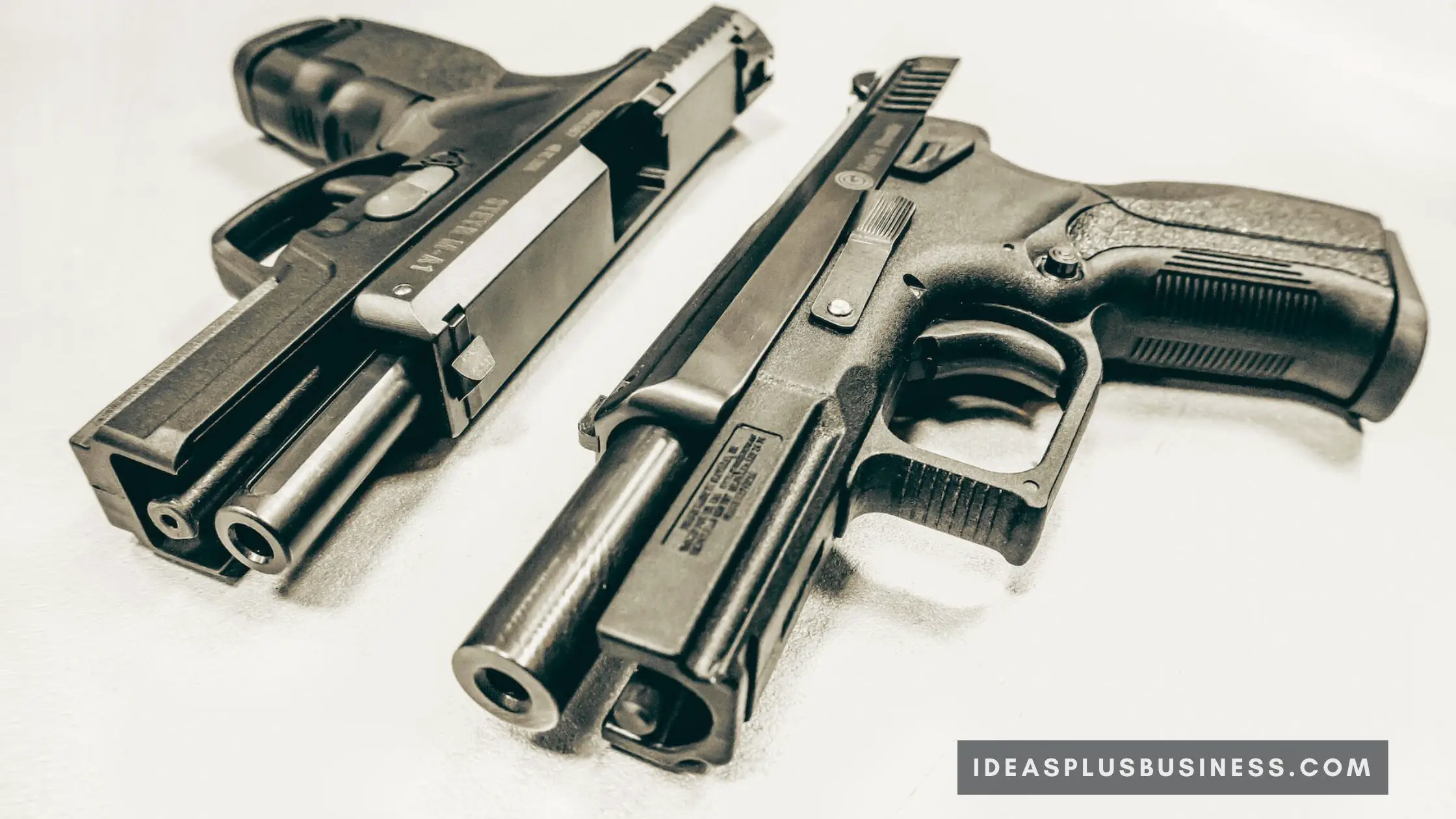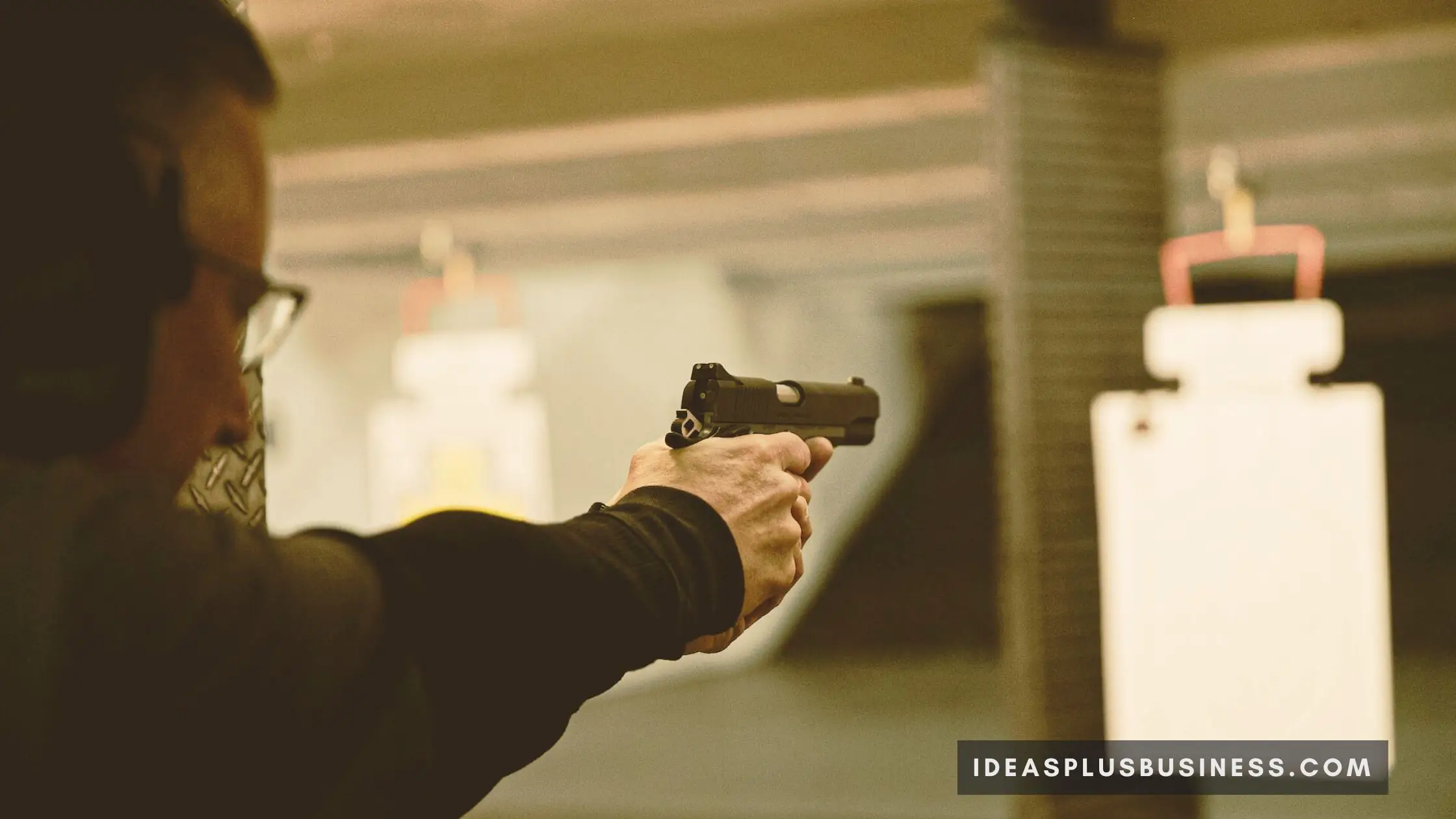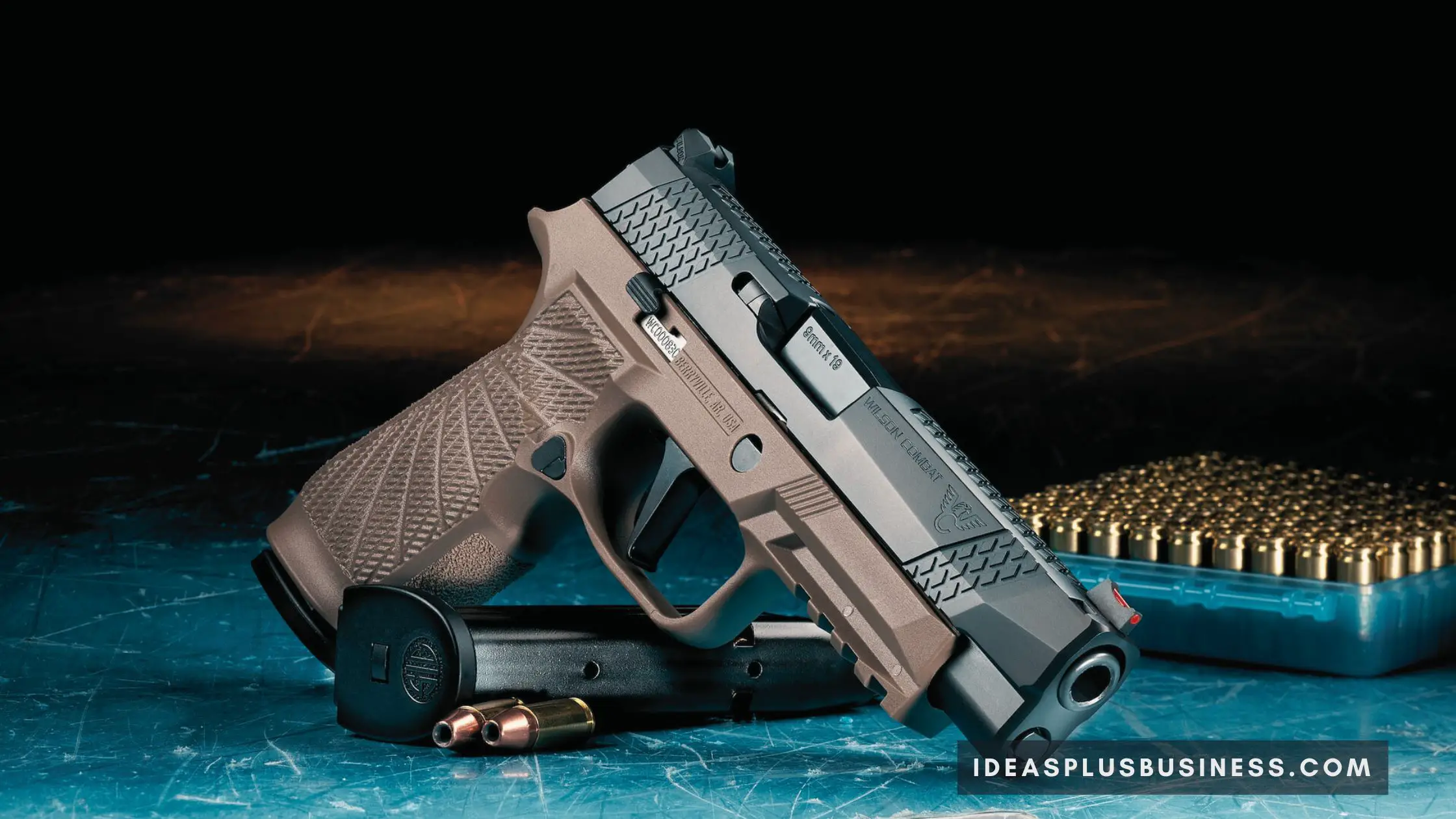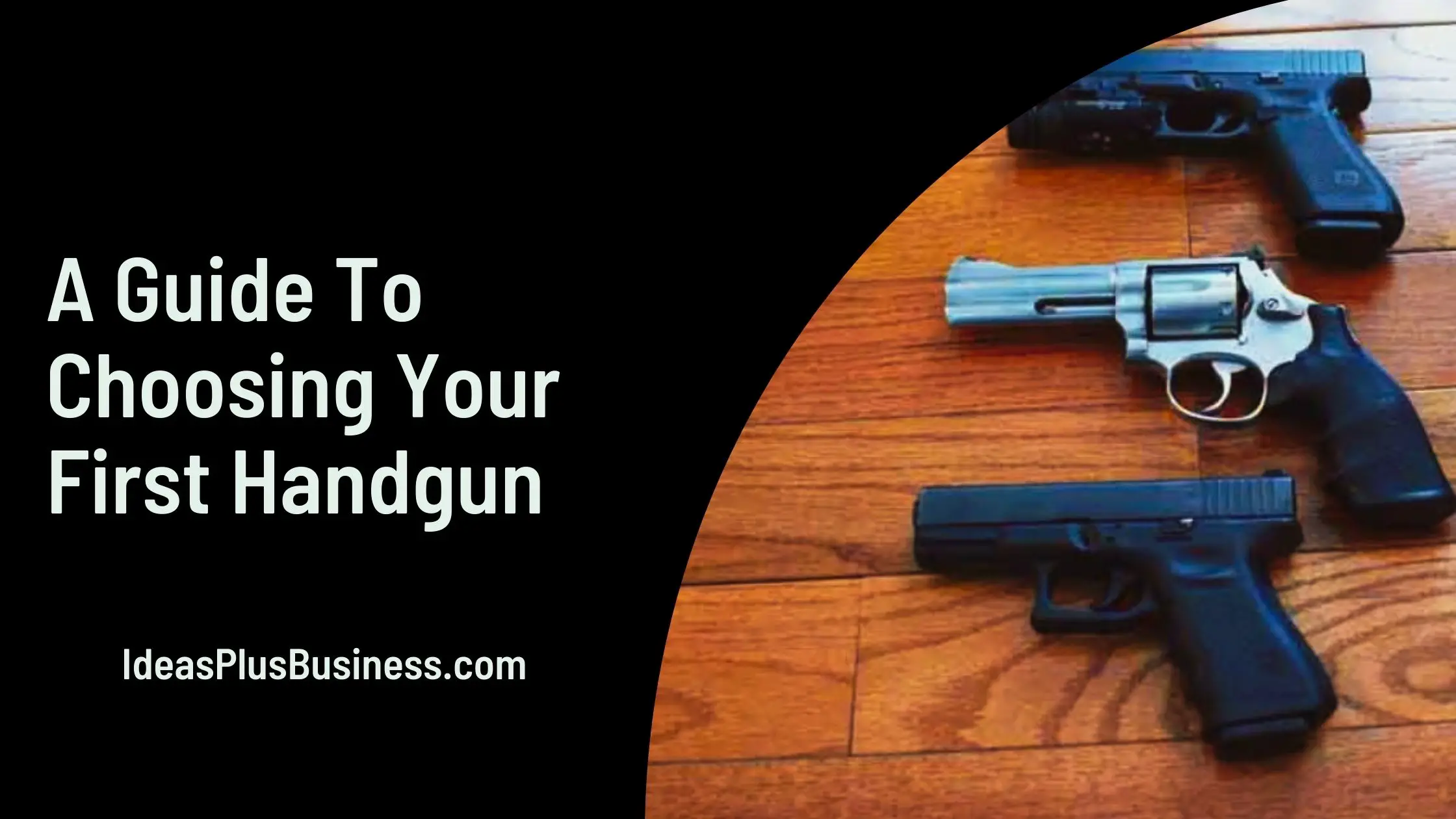Welcome to the exhilarating world of firearm ownership, where choosing your first handgun is a pivotal and exciting step. Whether you are drawn to the realm of self-defense, captivated by the precision of target shooting, or considering hunting pursuits, selecting the right handgun is a decision that demands thoughtful consideration.
In this guide, we joined forces with Arms Directory to extend a warm welcome to new shooters, emphasizing the importance of choosing your first handgun that aligns with both your practical needs and personal preferences.
As we delve into the key factors influencing this choice, remember that your journey into responsible gun ownership begins with understanding the significance of reliability, personal comfort, and, above all, safety.
1. Do You Need A Handgun?
The decision to acquire a handgun is a deeply personal one, often rooted in specific needs and aspirations.
People turn to handguns for various reasons, from the practical considerations of self-defense to the precision and skill refinement offered by target shooting. Perhaps you’re contemplating joining the ranks of hunters who appreciate the versatility of a handgun in certain scenarios.
To determine if a handgun aligns with your lifestyle, ask yourself probing questions. Do you prioritize personal safety in a world that can be unpredictable? Are you drawn to the discipline and accuracy demanded by target shooting?
Are you exploring a more mobile and versatile approach to hunting? By contemplating these queries, you’ll unearth the motivations that lead many to seek handgun ownership, making an informed choice that resonates with your unique requirements.

2. Prioritize Reliability
When embarking on the journey of selecting your first handgun, an attribute that should stand tall in your criteria is reliability. Your handgun isn’t merely a possession; it’s a tool upon which you may depend in critical moments. Prioritizing reliability involves delving into the reputation of various brands and models.
Extensive research will unveil the experiences of fellow shooters, shedding light on the durability and dependability of different handguns. Seek reviews and testimonials, explore online forums, and consult with seasoned shooters to gather insights into the track record of your prospective choices.
The reliability of a handgun extends beyond its ability to fire accurately; it encompasses factors like maintenance, durability, and how well it performs under varying conditions. In a realm where trust in your equipment is paramount, choosing a handgun celebrated for its reliability ensures that your investment is not just in an object, but in a dependable ally.
3. Practice Shooting Different Types of Pistols
As you venture into the world of handgun ownership, hands-on experience becomes an invaluable guide. Before committing to a purchase, take the opportunity to practice shooting different types of pistols.
This practice not only familiarizes you with the diverse options available but also allows you to assess critical factors like grip, trigger pull, and recoil management. Each handgun model comes with its unique characteristics, and what suits one shooter might not be the perfect fit for another.
Attend shooting ranges that offer rental services, enabling you to try out a variety of pistols. Pay close attention to how each firearm feels in your hands, how smoothly the trigger engages, and how effectively you can manage recoil.

4. A Striker or Hammer-Fired First Handgun?
When delving into the realm of handguns, understanding the mechanism that powers your firearm is crucial. Two primary categories, striker-fired and hammer-fired pistols, dominate the market.
A striker-fired gun utilizes a spring-loaded firing pin housed within the slide, delivering a consistent and relatively lighter trigger pull. On the other hand, a hammer-fired gun relies on an external hammer that strikes the firing pin, offering a distinct tactile feedback and often a more deliberate trigger pull.
Each system presents its set of pros and cons. Striker-fired pistols are renowned for their simplicity, reduced parts, and consistent trigger pulls, making them favored for self-defense applications.
Hammer-fired guns, with their traditional appeal, provide a visual and tactile indicator of the gun’s readiness. They may also offer a shorter trigger reset, enhancing rapid-fire capabilities.
Ultimately, the choice between striker and hammer-fired pistols depends on personal preference, shooting style, and the intended use of the handgun. Familiarizing yourself with these distinctions empowers you to make an informed decision tailored to your needs and preferences.
5. Safety and Optics
In the world of handguns, safety stands as the cornerstone of responsible ownership. Before delving into the nuances of optics, it is paramount to emphasize the fundamental principles of firearm safety.
Adhering to basic rules such as treating every gun as if it’s loaded, keeping the muzzle pointed in a safe direction, and ensuring your finger stays off the trigger until ready to shoot lays a solid foundation for responsible gun ownership.
When it comes to optics, the choice often hinges on the intended use of the handgun. Traditional iron sights, consisting of front and rear notched sights, provide a reliable and durable aiming solution. They are well-suited for close-quarters shooting and scenarios where quick target acquisition is crucial.
Red dot sights, on the other hand, offer rapid target acquisition and improved accuracy. These optics project a reticle onto a lens, allowing for quicker sight alignment and enhanced situational awareness.
For those venturing into longer-range shooting or seeking enhanced precision, scopes become a viable option. Typically associated with rifles, some handguns are equipped with optics mounts to accommodate magnified scopes. This configuration is popular among competitive shooters engaging targets at extended distances.
Regardless of the chosen optic, regular training and familiarity with your firearm are essential. Optics can enhance accuracy, but proficiency in using them under various conditions is paramount.
Regular practice at the range, combined with a commitment to ongoing education about firearm safety and optics, ensures a well-rounded and responsible approach to handgun ownership.

Summary
In the quest for the ideal handgun, new shooters should prioritize individual needs, considering factors like self-defense, target shooting, or hunting. Reliability is paramount, with thorough research into reputable brands.
Trying various pistols ensures the perfect fit, focusing on grip, trigger pull, and recoil. Understanding the distinctions between striker and hammer-fired guns aids informed decisions.
Safety takes precedence, and optics, from iron sights to scopes, must align with your shooting goals. The journey concludes with a reminder: finding the right handgun is a personal journey of practice, proficiency, and unwavering commitment to safety.

I am Adeyemi Adetilewa, an SEO Specialist helping online businesses grow through content creation and proven SEO strategies. Proficient in WordPress CMS, Technical Site Audits, Search Engine Optimization, Keyword Research, and Technical Writing (Portfolio).
Founder and Editor-In-Chief of Ideas Plus Business Magazine, an online business resource for entrepreneurs. I help brands share unique and impactful stories through the use of public relations, advertising, and online marketing. My work has been featured in the Huffington Post, Thrive Global, Addicted2Success, Hackernoon, The Good Men Project, and other publications.
